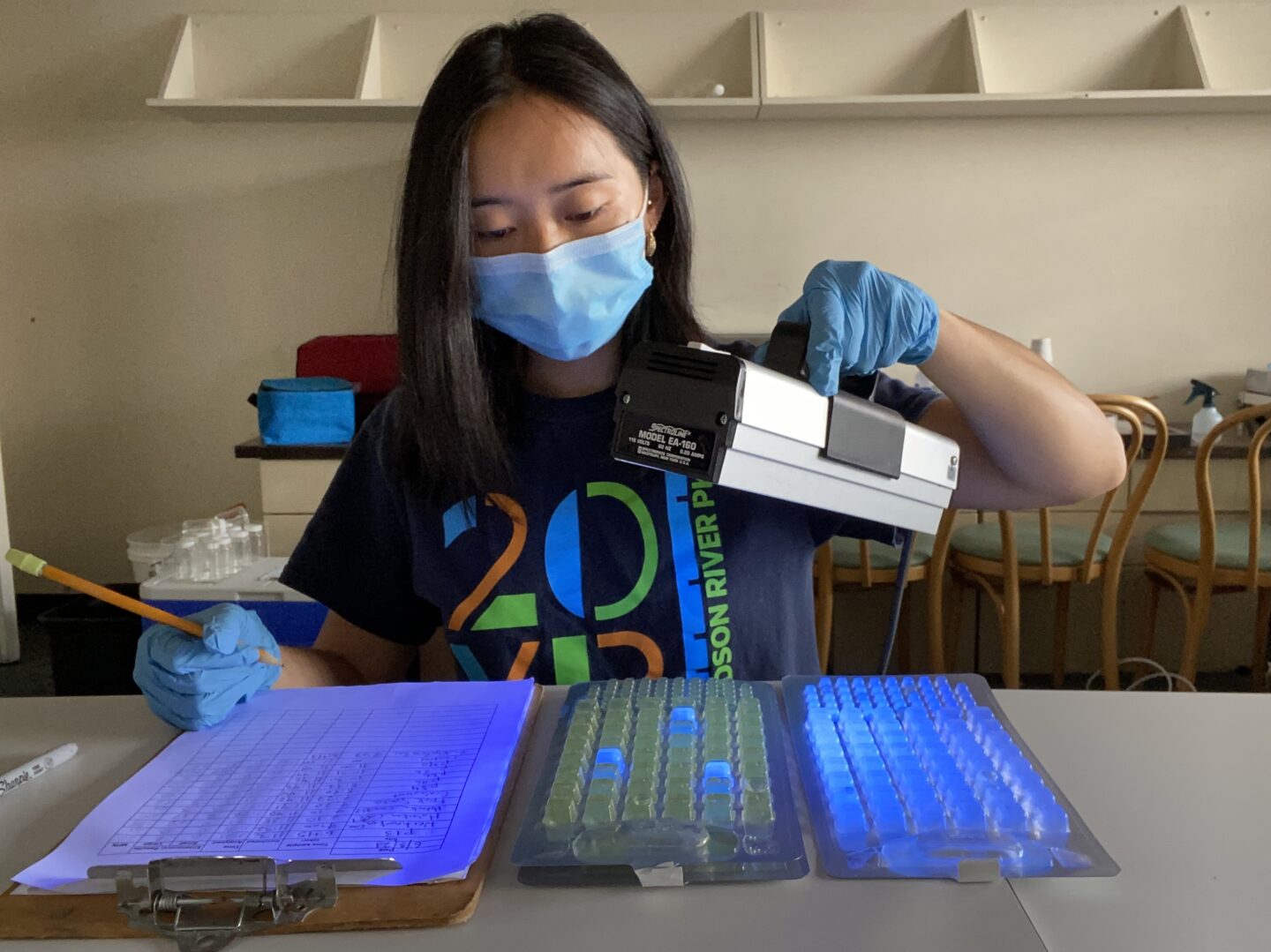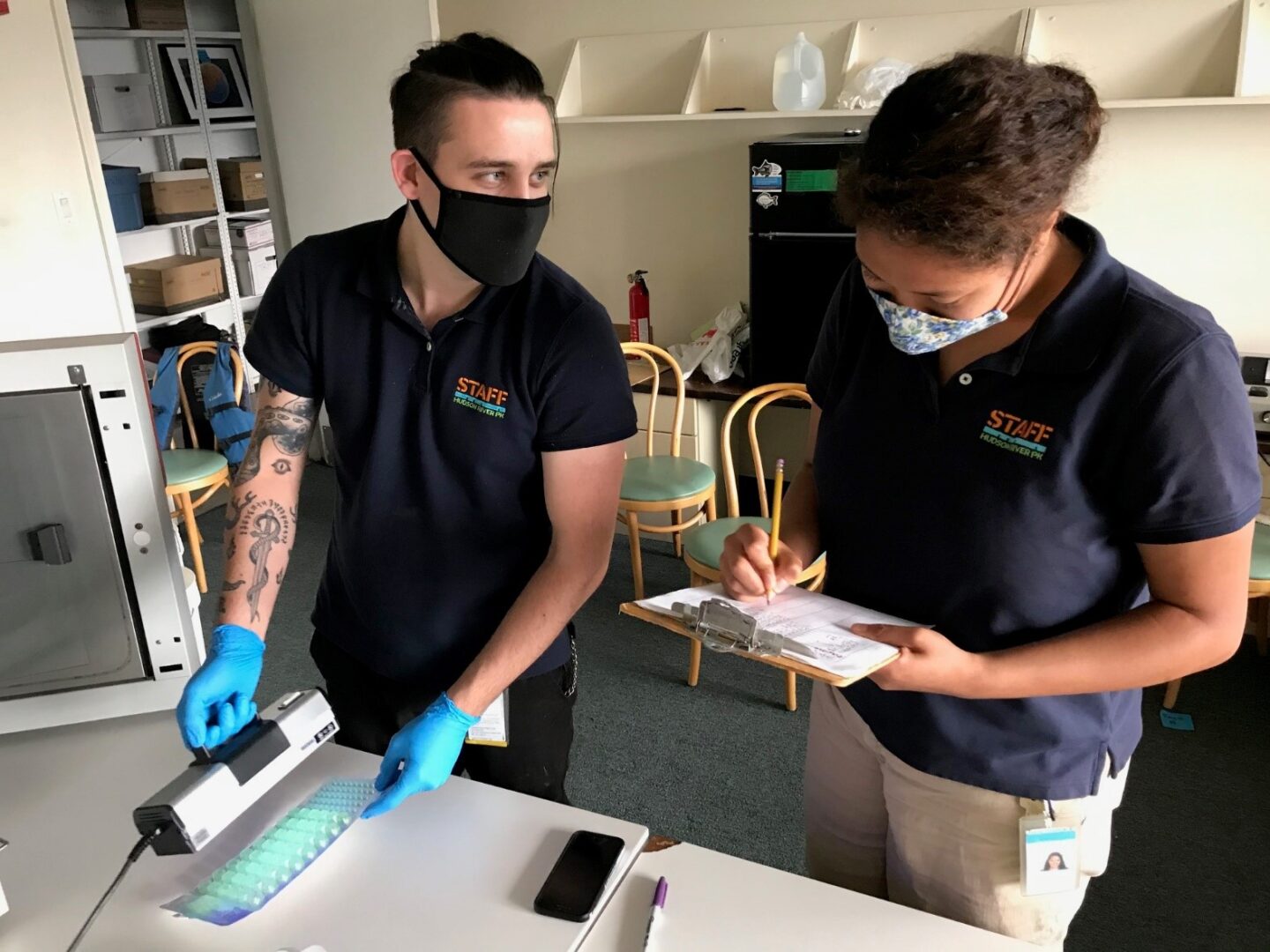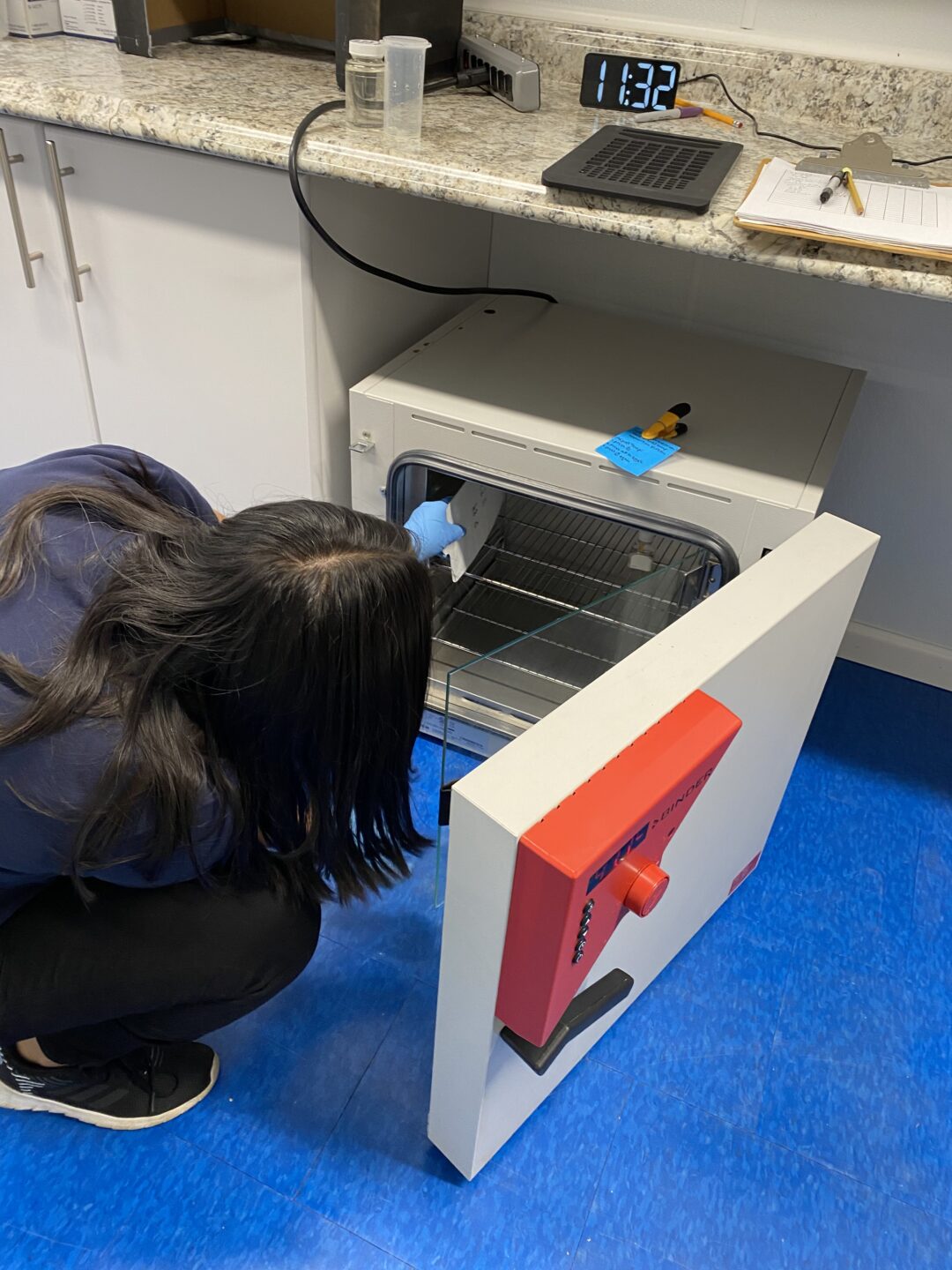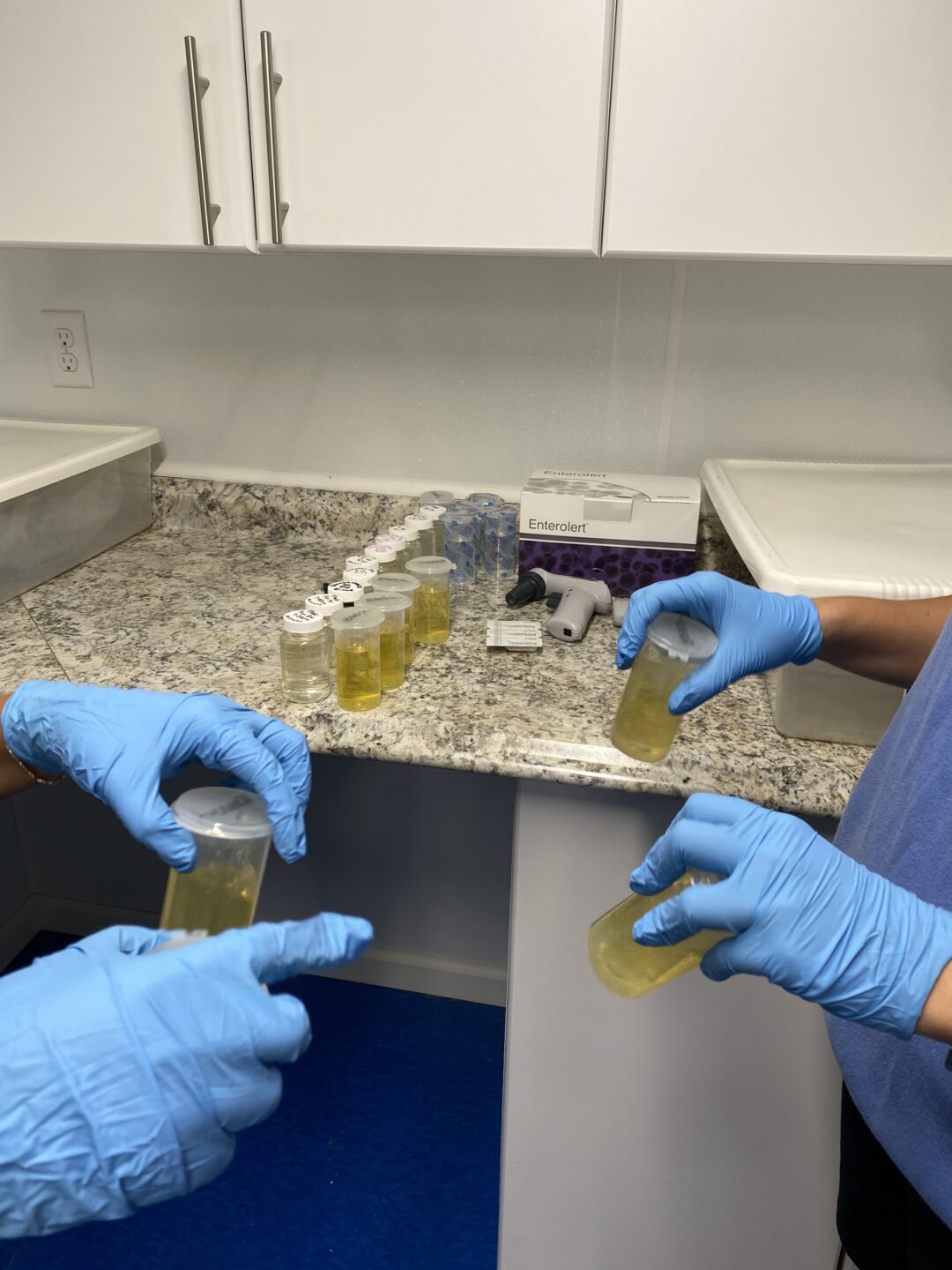For 20 weeks starting in May, nearly 70 volunteer citizen scientists from local boathouses and community groups collect weekly water samples for the Citizens’ Water Quality Testing Program (CWQTP) at boat launches and docks from Yonkers to Jamaica Bay. All samples are tested for microbes of the genus Enterococcus using the US EPA approved IDEXX Enterolert protocols.
View the full map of water quality testing program locations.
Enterococci are bacteria that commonly live in the feces of humans and other vertebrates. Their presence in the water is an indication of fecal pollution and the possible presence of pathogens that could be harmful to human health. Combined sewer overflow (CSO) discharges and storm water runoff from streets are the primary contributors to fecal pollution in the Hudson River. When correlated with rain and tide data, bacterial concentrations can help better inform boaters and other recreational users of the harbor of possible health risks in order to make informed decisions about utilizing the harbor safely.
CWQTP Partner Labs
Sarah Lawrence Center for the Urban River at Beczak
Lamont-Doherty Earth Observatory at the Columbia University Earth Institute
John Jay College of Criminal Justice Department of Sciences
Queens College School of Earth and Environmental Sciences
Brooklyn College
Rocking the Boat
LaGuardia Community College Biology Department
Bronx River Alliance
St. Francis College Biology Department
SUNY Maritime College
Data from Hudson River Park Testing Sites
Pier 26
Pier 40
Gansevoort Peninsula
Pier 66
Pier 84
Pier 96
Reports & Data
2023 Pathogen Report
2023 Pathogen Data
2022 Pathogen Report
2022 Pathogen Data
2021 Pathogen Report
2021 Pathogen Data




